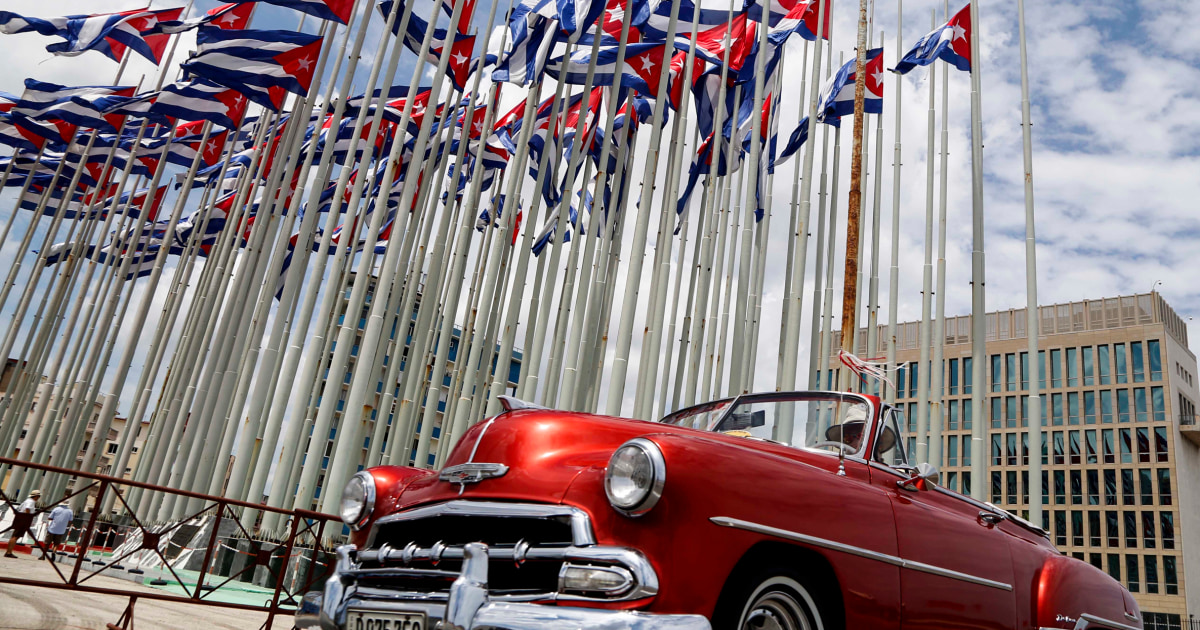HAVANA — The US Embassy in Cuba will reopen visa and consular services on Wednesday, the first time it has done so since a series of unexplained health incidents among diplomatic staff in 2017 reduced the US presence in Havana.
The Embassy confirmed this week that it will begin processing immigrant visas, with priority given to permits to reunite Cubans with family members in the US, and others such as the diversity visa lottery.
The resumption comes amid the largest immigration flight from Cuba in decades, which has put pressure on the Biden administration to open more legal avenues to Cubans and start a dialogue with the Cuban government, despite a historically tense relationship.
They are expected to hand out at least 20,000 visas a year, though it is just a drop in the ocean of the migration tide, fueled by intensifying economic and political crises on the island.
As of late December, US authorities reported stopping Cubans 34,675 times along the border with Mexico in November, up 21% from the 28,848 times in October.
Month by month, that number has gradually increased. Cubans are now the second-largest nationality after Mexicans to show up at the border, US Customs and Border Protection data shows.
The growing migration is due to a complex series of factors, including economic, energy and political crises, as well as deep discontent among Cubans.
While the vast majority of Cuban immigrants make their way to the US via flights to Nicaragua and cross overland at the US border with Mexico, thousands more have also made the perilous journey by sea. They travel 90 miles to the Florida coast, often arriving on rickety and poorly built boats packed with immigrants.
The exodus from Cuba is also compounded by increasing migration to the US from other countries such as Haiti and Venezuela, forcing the US government to deal with an increasingly complex situation on its southern border.
The renewal of visa work at the embassy comes after a series of immigration talks and visits by US officials to Havana in recent months, and may also signal a slow thaw between the two governments.
“Participating in these talks underscores our commitment to continue constructive discussions with the Cuban government when appropriate to advance the interests of the United States,” the US Embassy said in a statement in November following a US delegation visit to Cuba. .
Baby steps are a far cry from relations under President Barack Obama, who eased many Cold War-era US sanctions during his tenure and made a historic visit to the island in 2016.
Consular and visa services were shut down on the island in 2017 after embassy staff were affected in a series of health incidentsalleged sonic attacks that remain largely unexplained.
As a result, many Cubans who wanted to immigrate to the US legally have had to fly to places like Guyana to do so before migrating or reuniting with family.
While relations have always been tense between Cuba and the US, they intensified following the closure of the embassy and the tightening of sanctions against Cuba by the Trump administration.
Under the Joe Biden presidency, the US has eased some restrictions on things like remittances and family travel from Miami to Cuba, but it has not fulfilled the hopes of many in Cuba that a Biden presidency would return the island to his “was Obama”.
Restrictions on tourist travel to Cuba and the imports and exports of many goods remain in force.
Also stoking tensions has been the Cuban government’s harsh treatment of participants in the 2021 protests on the island, including heavy prison sentences imposed on minors, a point of constant criticism by the Biden administration.
Cuban officials have repeatedly expressed optimism about talks with the US and steps to reopen visa services. Cuba’s Vice Minister of Foreign Affairs, Carlos Cossio, said in November that guaranteeing migration through safe and legal channels is a «mutual objective» of both countries.
But Cossio also blamed US sanctions for the flight of tens of thousands of people from the island, saying «there is no doubt that a policy aimed at depressing the standard of living of a population is a direct driver of migration.» ”.

